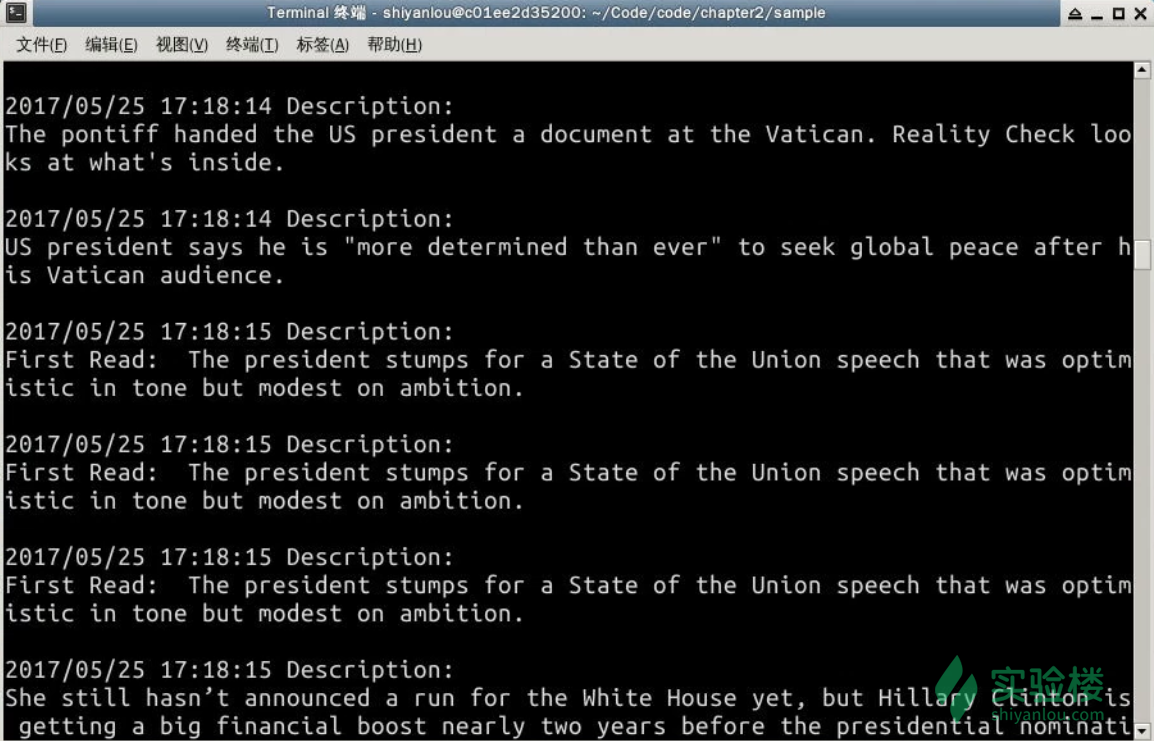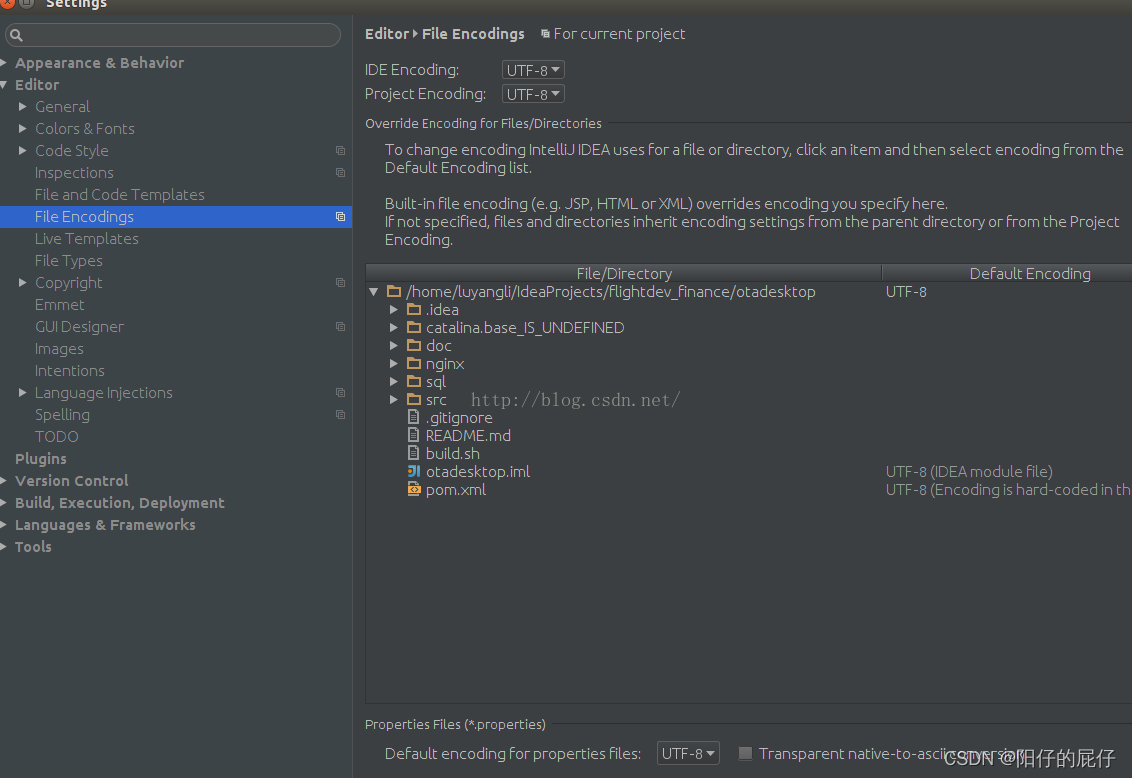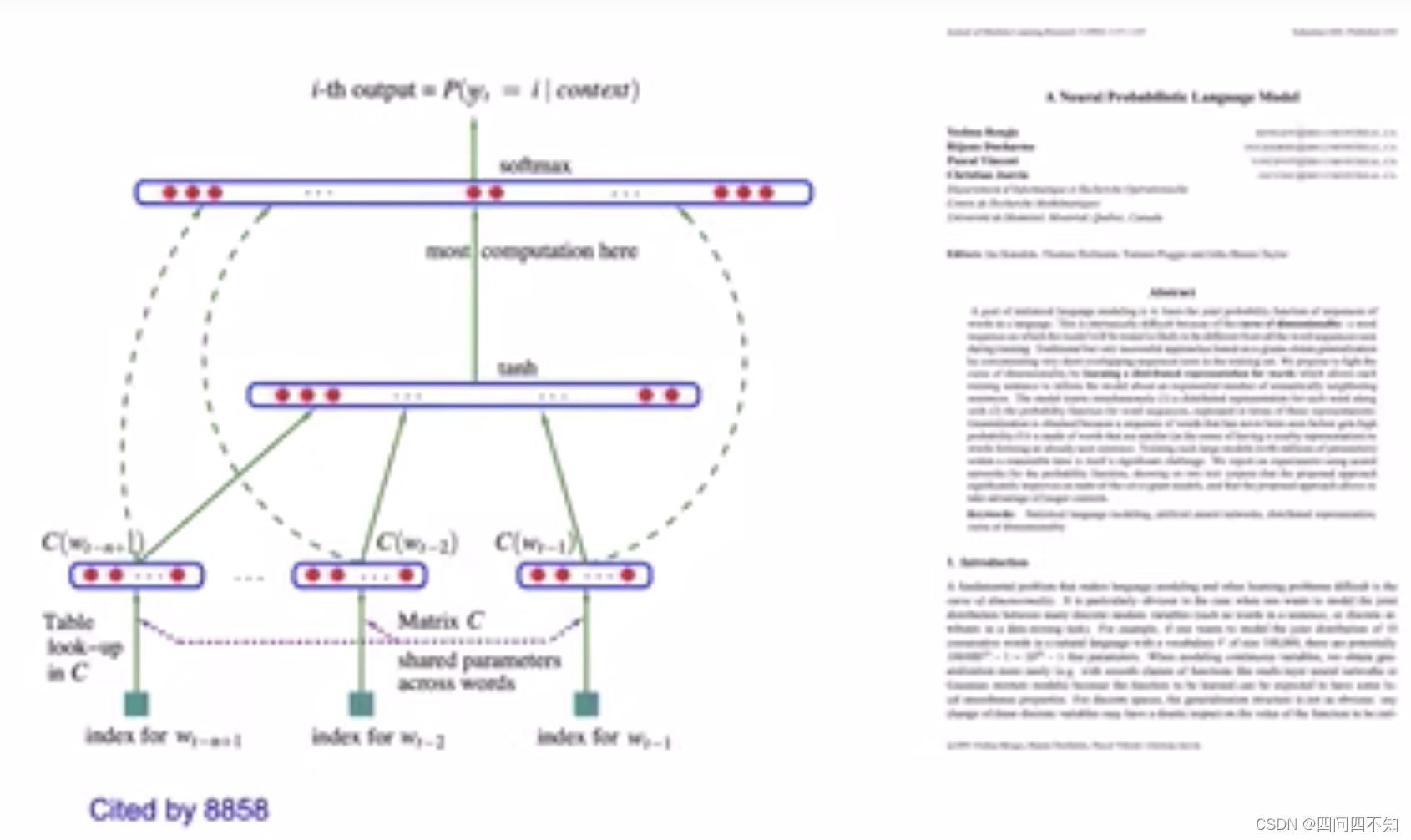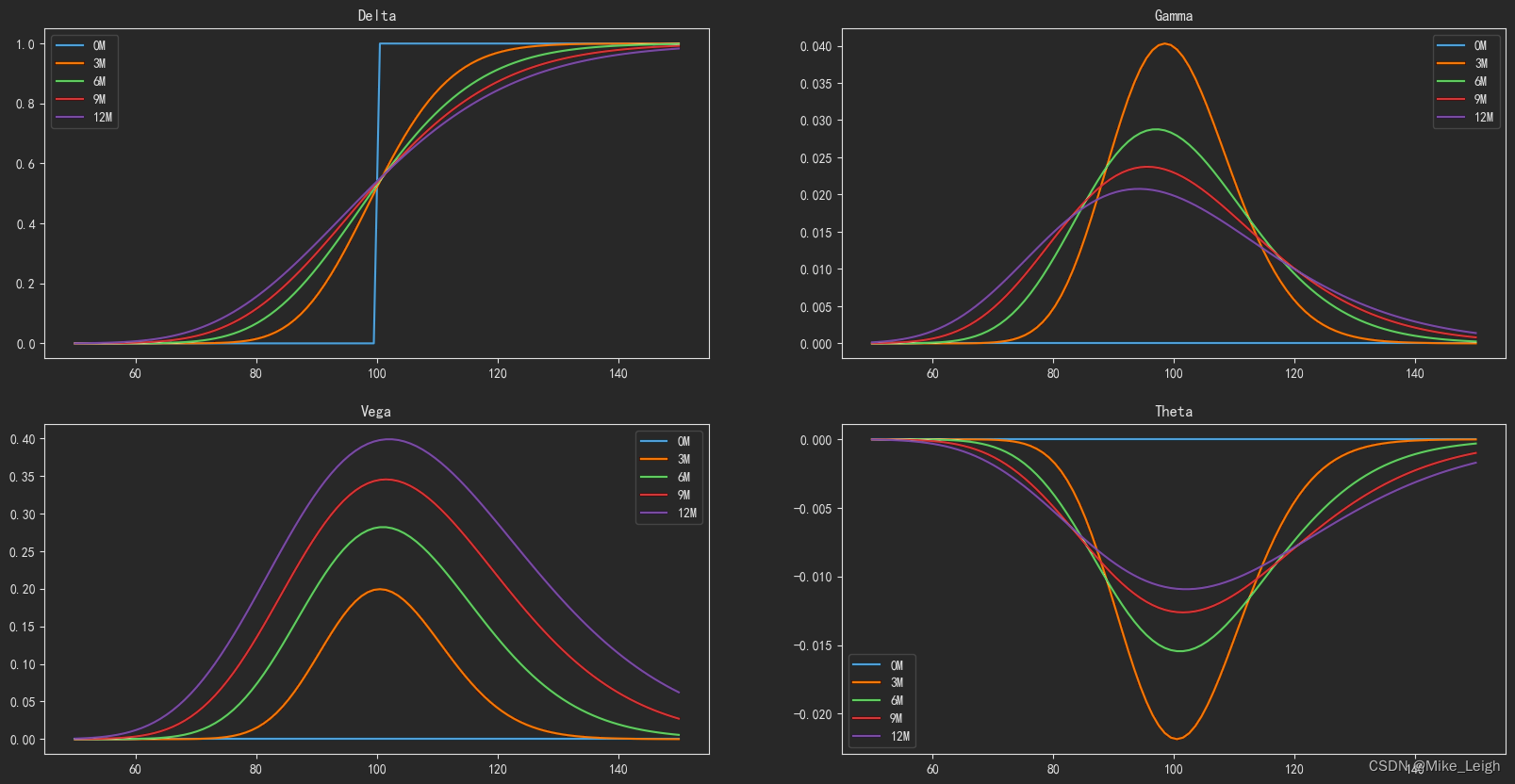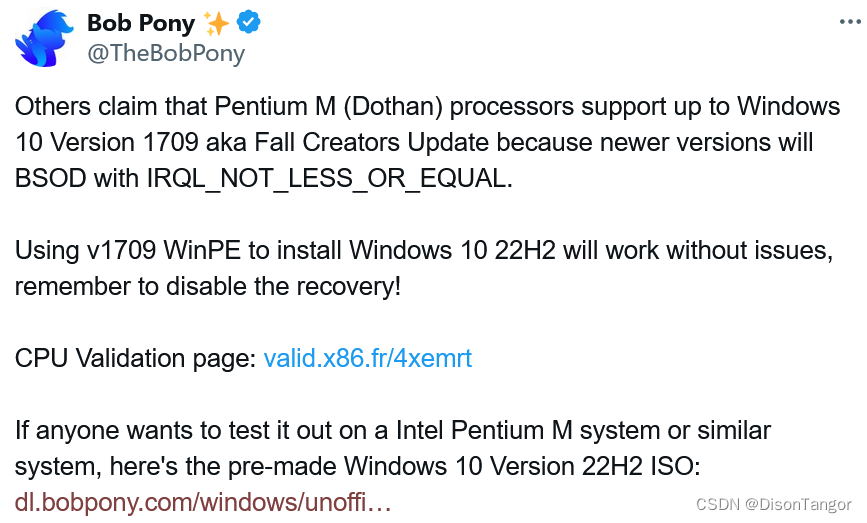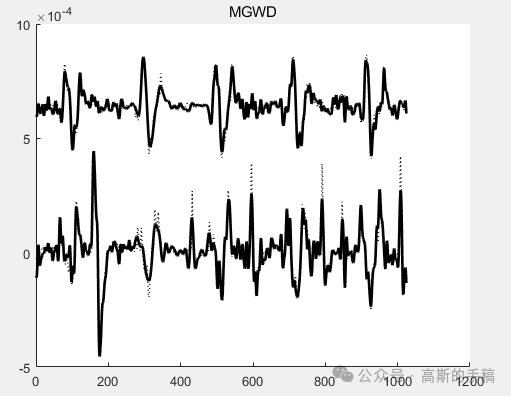
W...Y的主页 😊
代码仓库分享💕

前言:相信大家对文件都不会太陌生、也不会太熟悉。在没有学习Linux操作系统时,我们在学习C或C++时都学过如何去创建、打开、读写等待文件的操作,知道一些语言级别的一些接口与函数。但是我相信对于没有学习操作系统的对文件的认识还很浅,今天我们就进入文件,好好学习操作系统与文件的关系。相信大家看完文件篇后会对文件有了新的认识和启发。话不多说我们开始学习。
目录
铺垫
代码回顾C文件接口
系统文件I/O
open接口
write read close类比C文件相关接口
文件描述符fd
文件描述符的分配规则
Linux中的重定向
使用 dup2 系统调用
在自治shell中加入重定向
铺垫
1.当我们创建一个文件但不对文件进行写入时,需不需要开辟一些空间呢?肯定是需要的。因为文件 = 内容 + 属性。文件的名称、创建时间、修改时间……对应的信息都需要进行存储。
2.我们访问文件之前,都得先打开文件,修改文件都是通过代码的方式完成修改的。而我们不能通过代码对磁盘中的文件直接做修改,是直接将文件加载到内存中后通过CPU进行对文件的修改。
3.我们在C语言中都知道,想要操作一个文件就必须使用fopen函数将文件打开,那是谁打开的文件呢?当我们在打开文件之前,必须要将想要访问文件的程序跑起来,所以归根结底是进程打开了文件。
4.一个进程也可以打开多个文件。所以一定时间段内,系统中存在多个进程,也可能存在更多被打开的文件。OS就要对这些被打开的文件进行管理,所以内核中一定要有描述被打开文件的结构体,并用其定义对象。
5.系统中不是所有的文件都是被打开的,被打开的文件叫内存文件,没有被打开的文件叫磁盘文件。
代码回顾C文件接口
hello.c写文件
#include <stdio.h>
#include <string.h>
int main()
{
FILE *fp = fopen("myfile", "w");
if (!fp)
{
printf("fopen error!\n");
}
const char *msg = "hello why!\n";
int count = 5;
while (count--)
{
fwrite(msg, strlen(msg), 1, fp);
}
fclose(fp);
return 0;
}
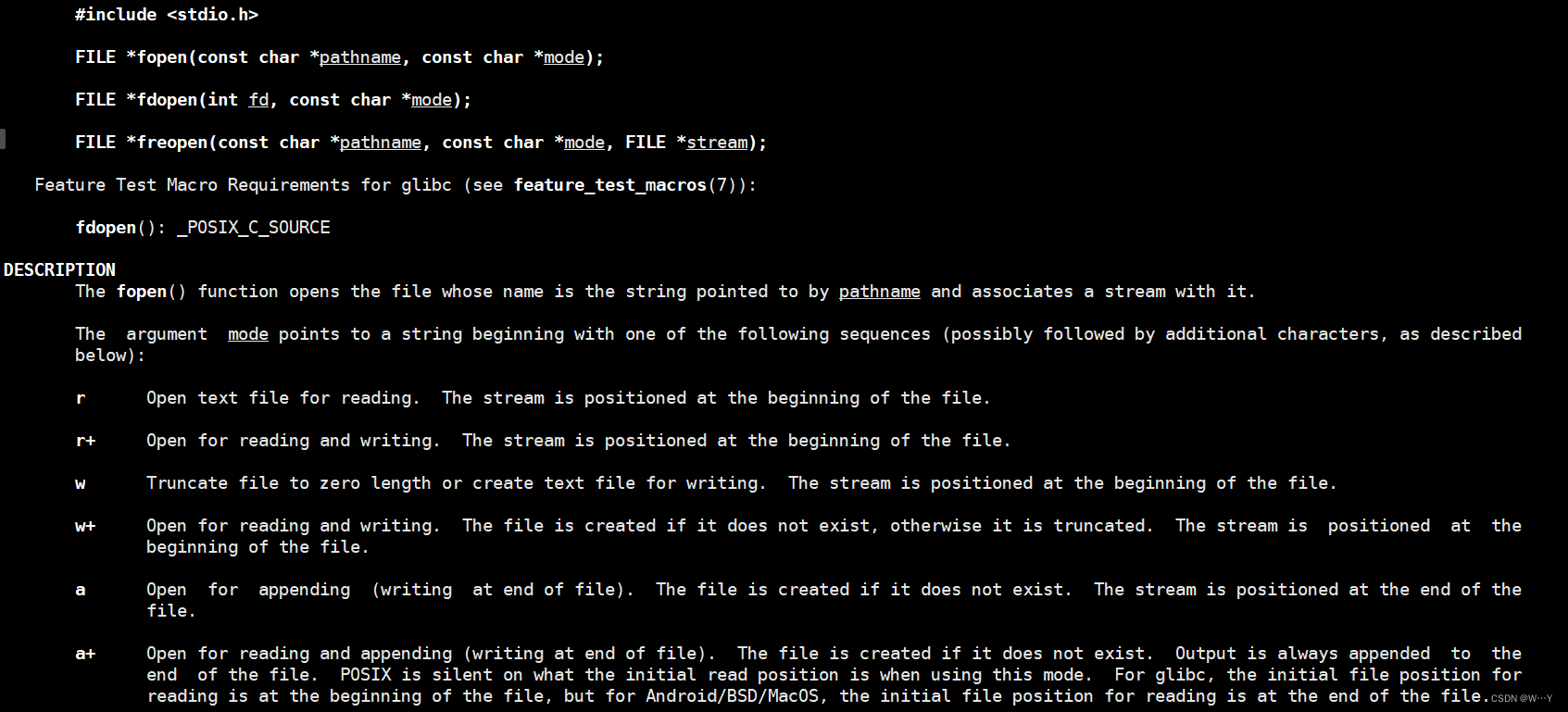
fopen模式中有很多模式:
r : 打开文本文件进行阅读,流位于文件的开头。
r+:开放阅读和写作,流位于文件的开头。
w:截断(缩短)文件为零长度或创建文本文件进行写入,流位于文件的开头。
w+:开放阅读和写作,如果文件不存在,则创建该文件,否则将被截断,流位于文件的开头。
a:打开以进行追加(写在文件末尾)。如果文件不存在,则创建该文件,流位于文件的末尾。
a+:打开以供读取和追加(在文件末尾写入)。如果文件不存在,则创建该文件。初始文件位置。对于阅读是在文件的开头,但输出始终附加到文件末尾。
#include <stdio.h>
#include <string.h>
int main()
{
FILE *fp = fopen("myfile", "r");
if (!fp)
{
printf("fopen error!\n");
}
char buf[1024];
const char *msg = "hello bit!\n";
while (1)
{
// 注意返回值和参数,此处有坑,仔细查看man手册关于该函数的说明
size_t s = fread(buf, 1, strlen(msg), fp);
if (s > 0)
{
buf[s] = 0;
printf("%s", buf);
}
if (feof(fp))
{
break;
}
}
fclose(fp);
return 0;
}
fwrite与fread函数都是C语言提供对文件读写的接口, 其就是将对应的内容输入或输出对应的文件流。
fread函数参数:
void * buffer 也就是想要把读取的数据到的地方的地址 比如一个叫做a的整形变量的地址 也就是&a 又或许是一个结构体对象 假设他叫s 那便是&s
size_t size 这就是接收数据的变量所占空间的大小 如果他是一个int类型 那就是sizeof(int)
size_t count 要写入数据的个数
FILE*stream 这是管理文件操作的指针 一般会在开始对文件开始操作前定义 这个指针会指向我们接下来要操作的文件
fwrite函数参数与fread参数相同,只是方向刚好相反。
输出信息到显示器,你有哪些方法:
#include <stdio.h>
#include <string.h>
int main()
{
const char *msg = "hello fwrite\n";
fwrite(msg, strlen(msg), 1, stdout);
printf("hello printf\n");
fprintf(stdout, "hello fprintf\n");
return 0;
}stdin & stdout & stderr
C默认会打开三个输入输出流,分别是stdin, stdout, stderr
仔细观察发现,这三个流的类型都是FILE*, fopen返回值类型,文件指针
系统文件I/O
操作文件,除了上述C接口(当然,C++也有接口,其他语言也有),我们还可以采用系统接口来进行文件访问,先来直接以代码的形式,实现和上面一模一样的代码:
写文件:
#include <stdio.h>
#include <sys/types.h>
#include <sys/stat.h>
#include <fcntl.h>
#include <unistd.h>
#include <string.h>
int main()
{
umask(0);
int fd = open("myfile", O_WRONLY | O_CREAT, 0644);
if (fd < 0)
{
perror("open");
return 1;
}
int count = 5;
const char *msg = "hello bit!\n";
int len = strlen(msg);
while (count--)
{
write(fd, msg, len); // fd: 后面讲, msg:缓冲区首地址, len: 本次读取,期望写入多少个字节的数据。 返回值:实际写了多少字节数据
}
close(fd);
return 0;
}读文件:
#include <stdio.h>
#include <sys/types.h>
#include <sys/stat.h>
#include <fcntl.h>
#include <unistd.h>
#include <string.h>
int main()
{
int fd = open("myfile", O_RDONLY);
if(fd < 0){
perror("open");
return 1;
}
const char *msg = "hello bit!\n";
char buf[1024];
while(1){
ssize_t s = read(fd, buf, strlen(msg));//类比write
if(s > 0){
printf("%s", buf);
}else{
break;
}
}
close(fd);
return 0;
}open接口
#include <sys/types.h>
#include <sys/stat.h>
#include <fcntl.h>
int open(const char *pathname, int flags);
int open(const char *pathname, int flags, mode_t mode);
pathname: 要打开或创建的目标文件
flags: 打开文件时,可以传入多个参数选项,用下面的一个或者多个常量进行“或”运算,构成flags。
参数:
O_RDONLY: 只读打开
O_WRONLY: 只写打开
O_RDWR : 读,写打开
这三个常量,必须指定一个且只能指定一个
O_CREAT : 若文件不存在,则创建它。需要使用mode选项,来指明新文件的访问权限
O_APPEND: 追加写其实我们可以使用|的方式将flags参数进行组合,因为他们就是宏。
返回值:
成功:新打开的文件描述符
失败:-1mode的意思就是创建目标文件时所需要的权限。

open 函数具体使用哪个,和具体应用场景相关,如目标文件不存在,需要open创建,则第三个参数表示创建文件的默认权限,否则,使用两个参数的open。
write read close类比C文件相关接口
在认识返回值之前,先来认识一下两个概念: 系统调用 和 库函数
上面的 fopen fclose fread fwrite 都是C标准库当中的函数,我们称之为库函数(libc)。
而, open close read write lseek 都属于系统提供的接口,称之为系统调用接口
回忆一下我们讲操作系统概念时,画的一张图
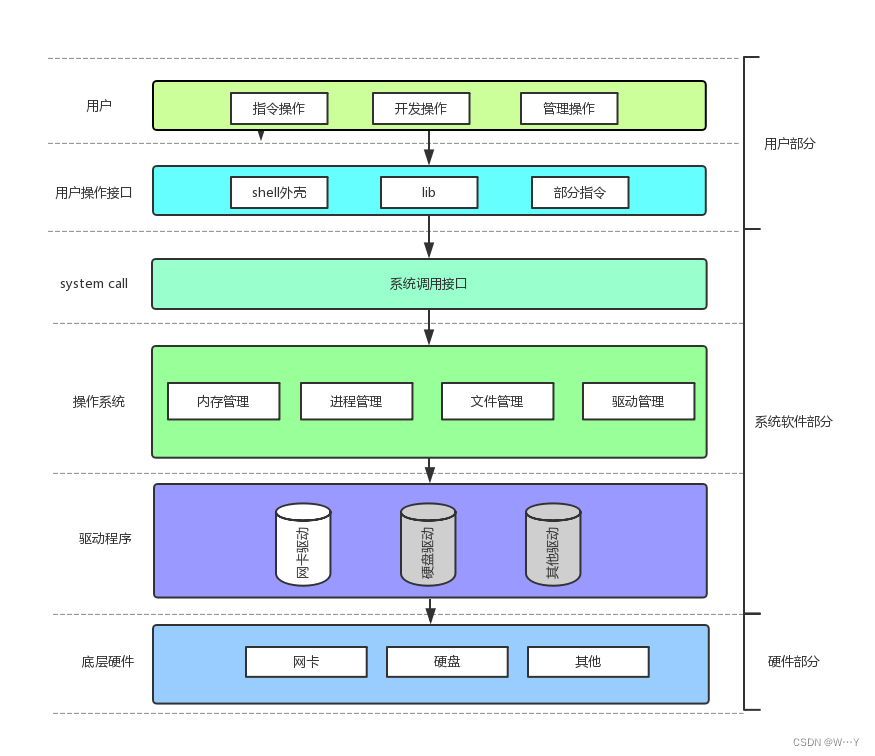
系统调用接口和库函数的关系,一目了然。
所以,可以认为,f#系列的函数,都是对系统调用的封装,方便二次开发。
文件描述符fd
通过学习open函数我们知道在成功打开文件后会返回一个文件描述符,而这些文件描述符就是一些整数,当我们打开多个文件后这些数字会从3开始一直往后延续,那为什么0、1、2没有人用呢?
0 & 1 & 2
Linux进程默认情况下会有3个缺省打开的文件描述符,分别是标准输入0, 标准输出1, 标准错误2.0,1,2对应的物理设备一般是:键盘,显示器,显示器
在系统层面我们可以看出,这写接口都是以的是系统提供的接口所使用的参数是文件描述符,而在语言层面上使用的都是File*指针,这个File是C语言分装的一个结构体。


而现在知道,文件描述符就是从0开始的小整数。当我们打开文件时,操作系统在内存中要创建相应的数据结构来描述目标文件。于是就有了file结构体。表示一个已经打开的文件对象。而进程执行open系统调用,所以必须让进程和文件关联起来。每个进程都有一个指针*files, 指向一张表files_struct,该表最重要的部分就是包涵一个指针数组,每个元素都是一个指向打开文件的指针!所以,本质上,文件描述符就是该数组的下标。所以,只要拿着文件描述符,就可以找到对应的文件 。

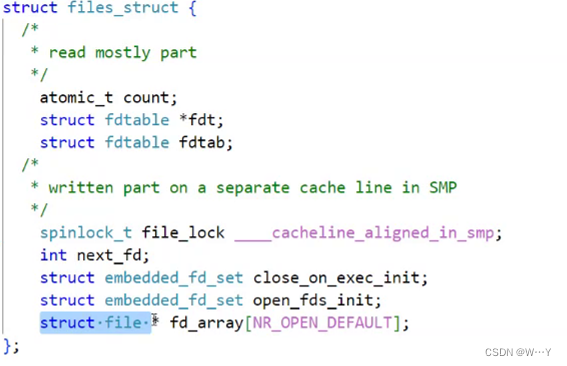
上图是源码,所以文件描述符的本质就是数组下标!!!
文件描述符的分配规则
直接看代码:
#include <stdio.h>
#include <sys/types.h>
#include <sys/stat.h>
#include <fcntl.h>
int main()
{
int fd = open("myfile", O_RDONLY);
if(fd < 0){
perror("open");
return 1;
}
printf("fd: %d\n", fd);
close(fd);
return 0;
}输出发现是 fd: 3
关闭0或者2,在看
#include <stdio.h>
#include <sys/types.h>
#include <sys/stat.h>
#include <fcntl.h>
int main()
{
close(0);
//close(2);
int fd = open("myfile", O_RDONLY);
if(fd < 0){
perror("open");
return 1;
}
printf("fd: %d\n", fd);
close(fd);
return 0;
}发现是结果是: fd: 0 或者 fd 2 可见,文件描述符的分配规则:在files_struct数组当中,找到当前没有被使用的最小的一个下标,作为新的文件描述符。
Linux中的重定向
我们知道重定向可以向文件中写入内容。

但是当我们使用 > 对文件进行重定向时,多次对文件进行写入,然后进行查看我们只能看到文件中只有我们最后一次写的内容,清空了之前写的所有内容。这不就是我们fopen函数中的‘w’模式。
![]()
 当我们使用>>操作符对文件进行重定向时,每次对文件写入都不会清空文件中的内容。所以这就类比fopen函数中的‘a’模式。
当我们使用>>操作符对文件进行重定向时,每次对文件写入都不会清空文件中的内容。所以这就类比fopen函数中的‘a’模式。

当我们现在已经知道重定向的含义以及文件描述符的分配规则,并且我们知道在语言层面是stdin、stdout、strerr,在系统层面就是0、1、2,当我们关闭1,然后使用写打开一个文件时,使用stdout就可以往文件中写入,这种现象叫做输出重定向。
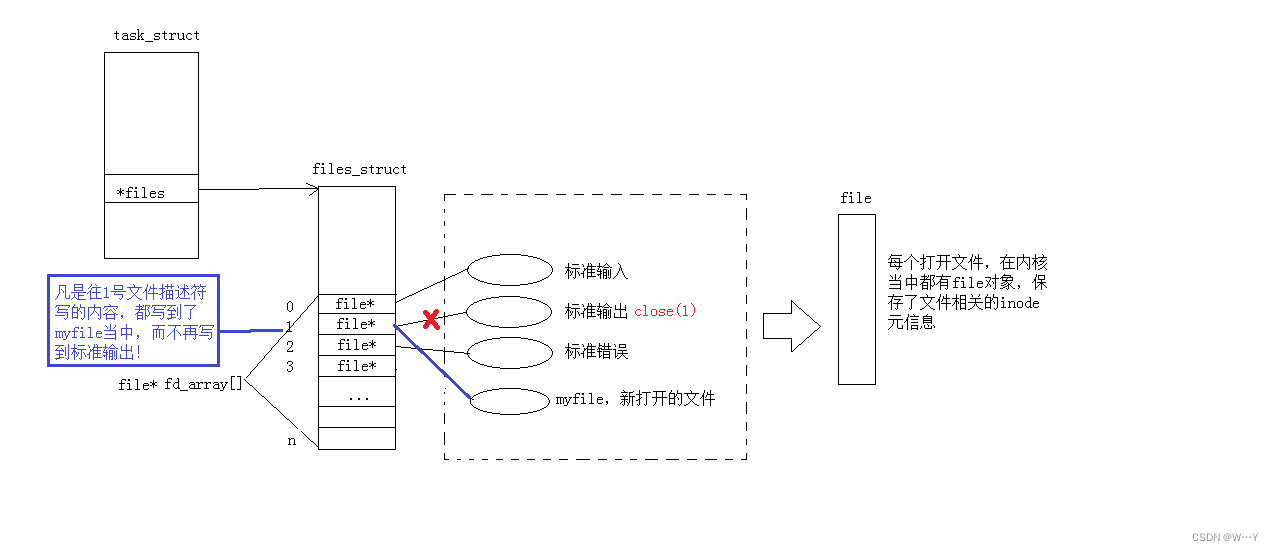
输出重定向代码:
#include <stdio.h>
#include <sys/types.h>
#include <sys/stat.h>
#include <fcntl.h>
#include <stdlib.h>
int main()
{
close(1);
int fd = open("myfile", O_WRONLY | O_CREAT, 00644);
if (fd < 0)
{
perror("open");
return 1;
}
printf("fd: %d\n", fd);
fflush(stdout);
close(fd);
exit(0);
}输入重定向代码:
#include <stdio.h>
#include <sys/types.h>
#include <sys/stat.h>
#include <fcntl.h>
#include <stdlib.h>
int main()
{
close(0);
int fd = open("test.txt", O_RDONLY);
if (fd < 0)
{
perror("open");
return 1;
}
int a = 0;
scanf("%d", &a);
printf("%d\n", a);
close(fd);
exit(0);
}追加重定向与输出重定向基本相同,唯一不同的就是将open函数中的flags参数改成O_WRONLY | O_CREAT|O_TRUNC即可。
使用 dup2 系统调用

![]()
其中,oldfd表示待复制的文件描述符,newfd表示新的文件描述符。该函数返回新的文件描述符,若出错则返回-1。
dup2函数的工作原理相对简单,主要包括以下几个步骤:
- 检查
oldfd和newfd是否相等,若相等则不进行任何操作,直接返回newfd;- 检查
newfd的合法性,若已经打开,则先关闭;- 复制
oldfd的文件表项到newfd,使得两者指向同一个文件表项;- 返回
newfd。
所以我们不需要进行close,直接使用dup2即可。
#include <stdio.h>
#include <unistd.h>
#include <fcntl.h>
int main()
{
int fd = open("./log", O_CREAT | O_RDWR);
if (fd < 0)
{
perror("open");
return 1;
}
close(1);
dup2(fd, 1);
for (;;)
{
char buf[1024] = {0};
ssize_t read_size = read(0, buf, sizeof(buf) - 1);
if (read_size < 0)
{
perror("read");
break;
}
printf("%s", buf);
fflush(stdout);
}
return 0;
}在自治shell中加入重定向
我们在命令行中可以使用echo指令进行重定向,我们之前做的简易shell中没有重定向,现在我们将代码补充完整:
#include <stdio.h>
#include <stdlib.h>
#include <string.h>
#include <unistd.h>
#include <ctype.h>
#include <sys/types.h>
#include <sys/stat.h>
#include <fcntl.h>
#include <sys/wait.h>
#define SIZE 1024
#define MAX_ARGC 64
#define SEP " "
#define STREND '\0'
// 下面的都和重定向有关
#define NoneRedir -1
#define StdinRedir 0
#define StdoutRedir 1
#define AppendRedir 2
#define IgnSpace(buf,pos) do{ while(isspace(buf[pos])) pos++; }while(0)
int redir_type = NoneRedir;
char *filename = NULL;
char *argv[MAX_ARGC];
char pwd[SIZE];
char env[SIZE]; // for test
int lastcode = 0;
// ls -a -l
// ls -a -l > log.txt
const char* HostName()
{
char *hostname = getenv("HOSTNAME");
if(hostname) return hostname;
else return "None";
}
const char* UserName()
{
char *hostname = getenv("USER");
if(hostname) return hostname;
else return "None";
}
const char *CurrentWorkDir()
{
char *hostname = getenv("PWD");
if(hostname) return hostname;
else return "None";
}
char *Home()
{
return getenv("HOME");
}
int Interactive(char out[], int size)
{
// 输出提示符并获取用户输入的命令字符串"ls -a -l"
printf("[%s@%s %s]$ ", UserName(), HostName(), CurrentWorkDir());
fgets(out, size, stdin);
out[strlen(out)-1] = 0; //'\0', commandline是空串的情况?
return strlen(out);
}
void CheckRedir(char in[])
{
// ls -a -l
// ls -a -l > log.txt
// ls -a -l >> log.txt
// cat < log.txt
redir_type = NoneRedir;
filename = NULL;
int pos = strlen(in) - 1;
while( pos >= 0 )
{
if(in[pos] == '>')
{
if(in[pos-1] == '>')
{
redir_type = AppendRedir;
in[pos-1] = STREND;
pos++;
IgnSpace(in, pos);
filename = in+pos;
break;
}
else
{
redir_type = StdoutRedir;
in[pos++] = STREND;
IgnSpace(in, pos);
filename = in+pos;
//printf("debug: %s, %d\n", filename, redir_type);
break;
}
}
else if(in[pos] == '<')
{
redir_type = StdinRedir;
in[pos++] = STREND;
IgnSpace(in, pos);
filename = in+pos;
//printf("debug: %s, %d\n", filename, redir_type);
break;
}
else
{
pos--;
}
}
}
void Split(char in[])
{
CheckRedir(in);
int i = 0;
argv[i++] = strtok(in, SEP); // "ls -a -l"
while(argv[i++] = strtok(NULL, SEP)); // 故意将== 写成 =
if(strcmp(argv[0], "ls") ==0)
{
argv[i-1] = (char*)"--color";
argv[i] = NULL;
}
}
void Execute()
{
pid_t id = fork();
if(id == 0)
{
int fd = -1;
if(redir_type == StdinRedir)
{
fd = open(filename, O_RDONLY);
dup2(fd, 0);
}
else if(redir_type == StdoutRedir)
{
fd = open(filename, O_CREAT | O_WRONLY | O_TRUNC);
dup2(fd, 1);
}
else if(redir_type == AppendRedir)
{
fd = open(filename, O_CREAT | O_WRONLY | O_APPEND);
dup2(fd, 1);
}
else
{
// do nothing
}
// 让子进程执行命名
execvp(argv[0], argv);
exit(1);
}
int status = 0;
pid_t rid = waitpid(id, &status, 0);
if(rid == id) lastcode = WEXITSTATUS(status);
//printf("run done, rid: %d\n", rid);
}
int BuildinCmd()
{
int ret = 0;
// 1. 检测是否是内建命令, 是 1, 否 0
if(strcmp("cd", argv[0]) == 0)
{
// 2. 执行
ret = 1;
char *target = argv[1]; //cd XXX or cd
if(!target) target = Home();
chdir(target);
char temp[1024];
getcwd(temp, 1024);
snprintf(pwd, SIZE, "PWD=%s", temp);
putenv(pwd);
}
else if(strcmp("export", argv[0]) == 0)
{
ret = 1;
if(argv[1])
{
strcpy(env, argv[1]);
putenv(env);
}
}
else if(strcmp("echo", argv[0]) == 0)
{
ret = 1;
if(argv[1] == NULL) {
printf("\n");
}
else{
if(argv[1][0] == '$')
{
if(argv[1][1] == '?')
{
printf("%d\n", lastcode);
lastcode = 0;
}
else{
char *e = getenv(argv[1]+1);
if(e) printf("%s\n", e);
}
}
else{
printf("%s\n", argv[1]);
}
}
}
return ret;
}
int main()
{
while(1)
{
char commandline[SIZE];
// 1. 打印命令行提示符,获取用户输入的命令字符串
int n = Interactive(commandline, SIZE);
if(n == 0) continue;
// 2. 对命令行字符串进行切割
Split(commandline);
// 3. 处理内建命令
n = BuildinCmd();
if(n) continue;
// 4. 执行这个命令
Execute();
}
return 0;
}
上面就是简易shell完整版,代码仅供参考!!!
以上就是本次全部内容,感谢大家观看。
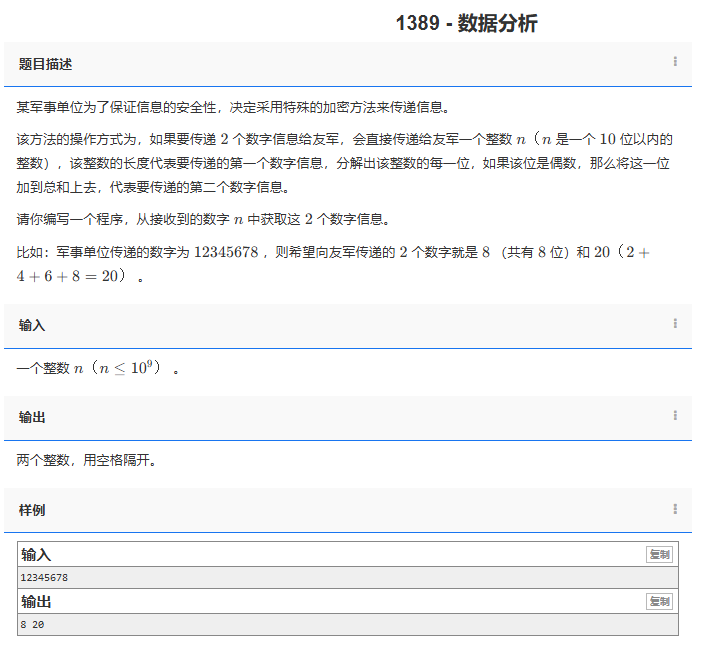

![[spring] Spring MVC Thymeleaf(上)](https://img-blog.csdnimg.cn/direct/0f74df51be32439488b1a78fcbe5108a.png)
